Blydenburgh Farm and New Mill in Blydenburgh County Park
Introduction
Text-to-speech Audio
Images
Vintage photo postcard of New Mill on Blydenburgh farm; sluice gate on left side of dam (O'Brien 1980)
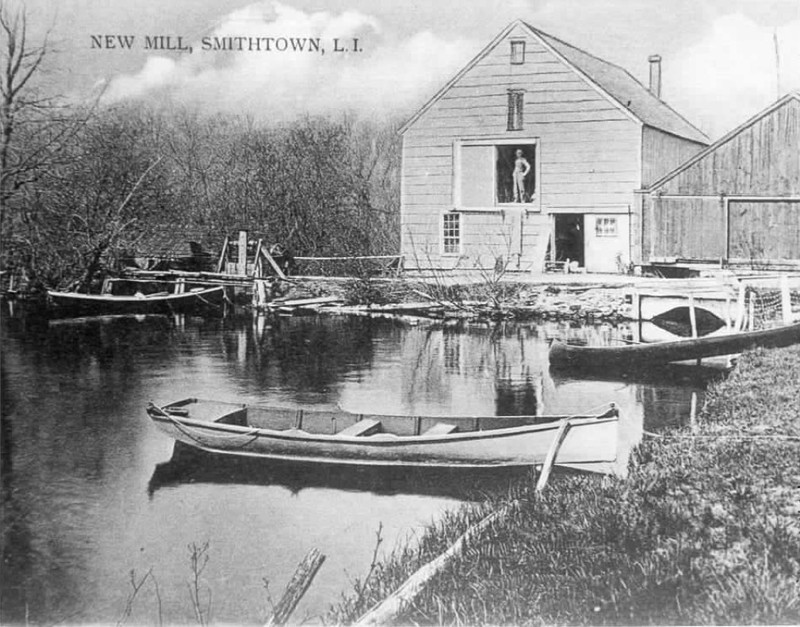
Plan map of Blydenburgh Park NRHP historic district (O'Brien 1983)
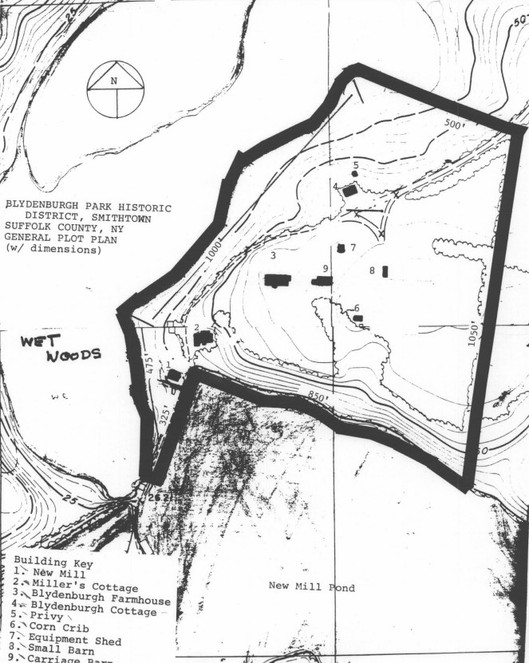
Blydenburgh Farm, Sawmill, Grist Mill, Miller's House on 1858 Map of Suffolk County (Robert P. Smith)
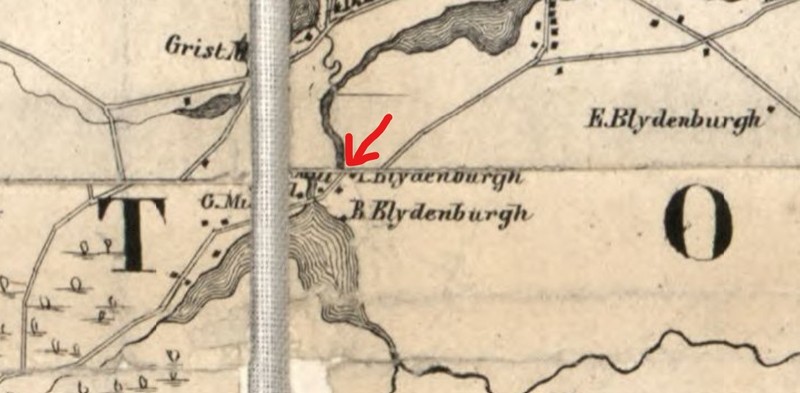
Isaac Blydenburgh Farmhouse, S & W sides, in 1980 photo (O'Brien)
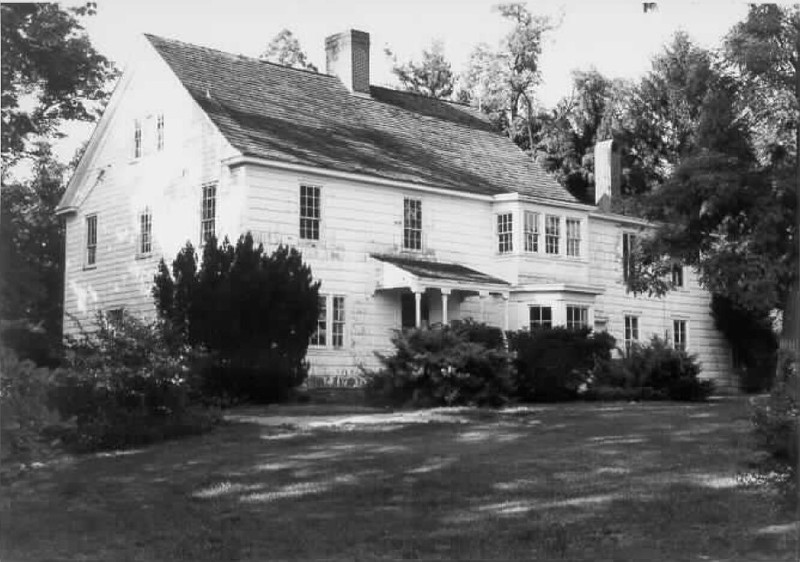
Circa 1860 Farm Cottage in 1980 photo, S & W sides (O'Brien)
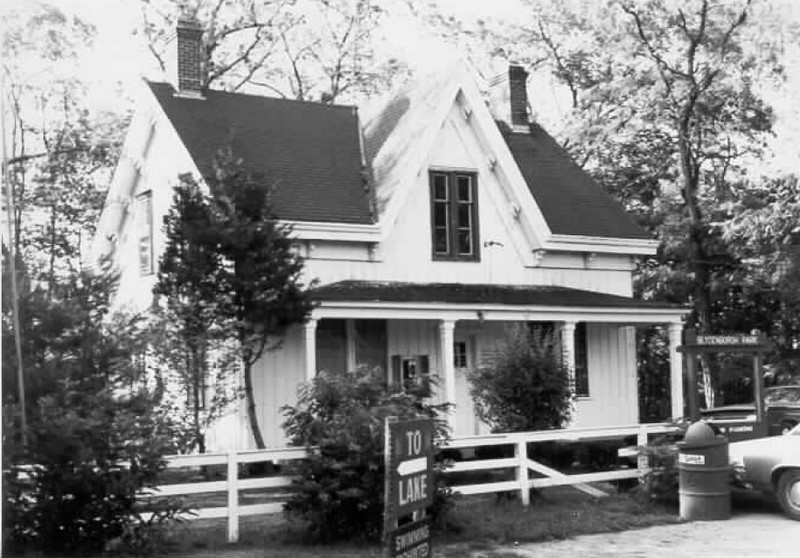
1980 photo of corn crib on Blydenburgh farm (O'Brien)
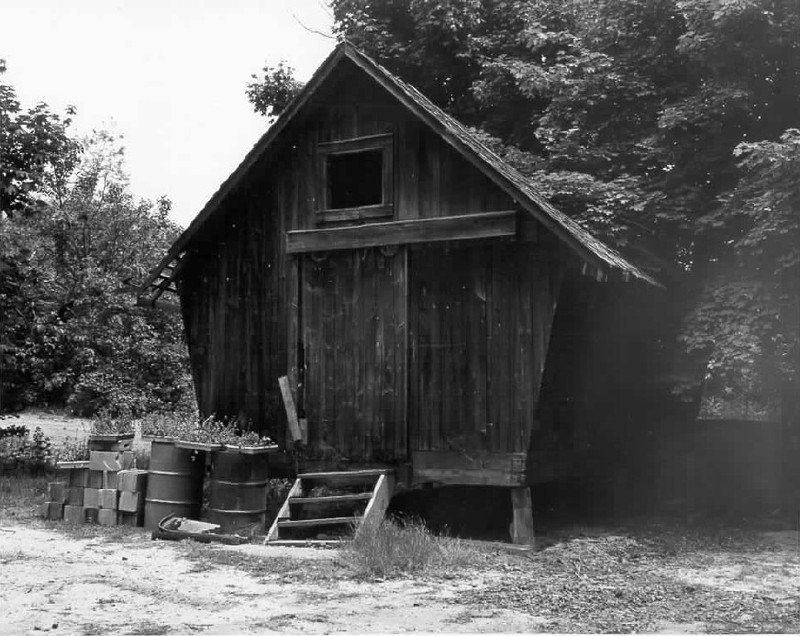
New Mill ruins on Blydenburgh Farm in 1980 photo (O'Brien)
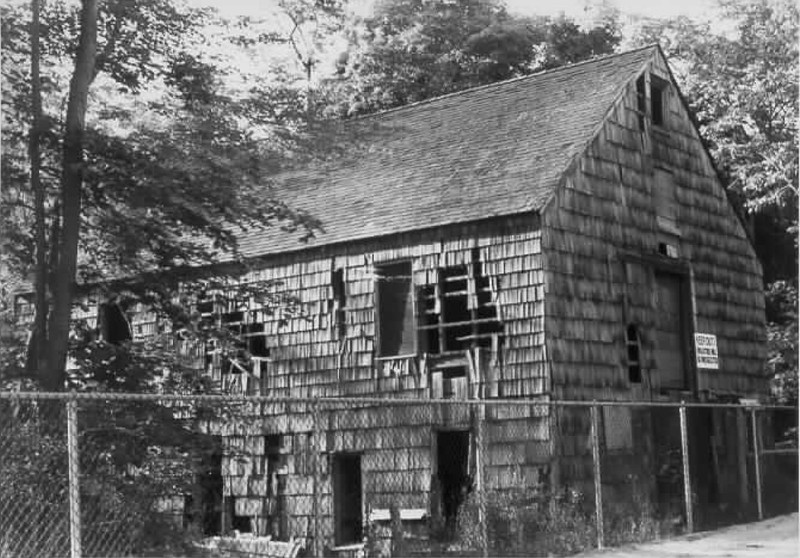
Historic American Buildings Survey photo of front of Miller's Cottage, post-1933 (HABS NY-6270)
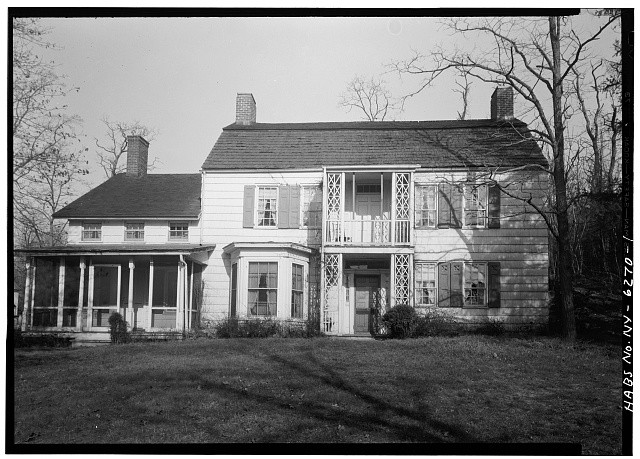
Front of Miller's Cottage on Blydenburgh Farm in 1980 photo (O'Brien)
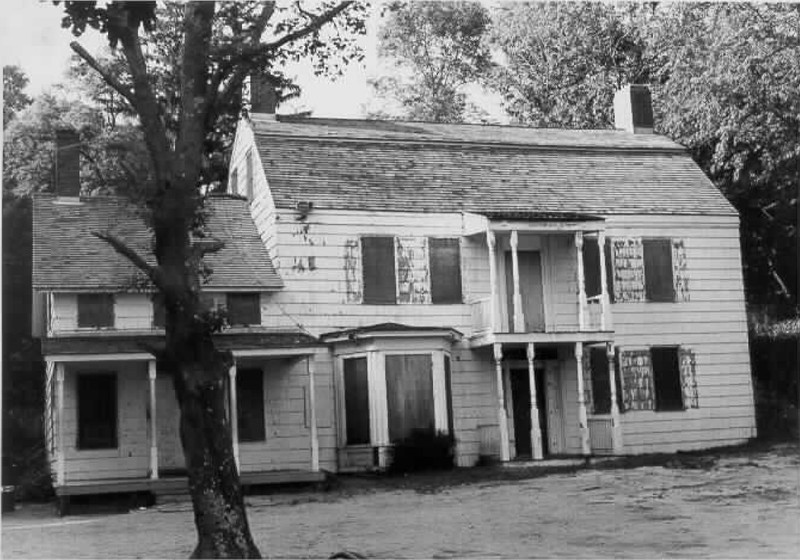
Backstory and Context
Text-to-speech Audio
The Blydenburgh Park Historic District covers ten acres on both sides of New Mill Road within a nineteenth-century settlement called Bushy Neck, established by the Blydenburgh family around 1800. Isaac Blydenburgh (1775-1858) was the great-grandson of Joseph Blydenburgh, one of the first settlers of Smithtown. In 1798, Isaac Blydenburgh and two other men - Joshua Smith, Jr. and Caleb Smith II (the son of Caleb Smith I of the nearby Caleb Smith park and Clio entry) - agreed to dam the Nissequoque River as it passed their respective farms and build a grist mill and a saw mill.
A lot near the mills was leased to Isaac Smith, who built the Miller's Cottage between 1801 and 1803. Joshua Smith sold his share of the enterprise to his two partners in 1811. Isaac Blydenburgh built the Blydenburgh Farmhouse around 1821. Caleb Smith II's share of the business went to two sons of Isaac Blydenburgh - Richard and Isaac W. Blyenburgh - by 1844. Richard Blydenburgh resided in the Gothic Revival style Farm Cottage, built around 1860. The brothers manufactured woolen cloth for uniforms during the Civil War. Richard owned his brother, Isaac's share of New Mill in the latter years of his life. After Richard died in 1873, the mills were run by Richard's son, Benjamin Blydenburgh, and Richard's grandson, Morgan, until 1924.
The Blydenburgh Park Historic District is locally significant for its containment of the relatively unchanged Bushy Neck settlement and for its examples of 1900s Long Island architecture. There are nine historic structures in the historic district. Two are clustered together: the New Mill and Miller's House, in a ravine on the north shore of New Mill Pond. A broad, level area northeast of the mill complex contains the Isaac Blydenburgh Farmhouse, the Farm Cottage, and five wood frame farm outbuildings: a privy, corn crib, equipment shed, small barn, and carriage barn. The New Mill was in a deteriorated condition when documented in 1980, but the original framing was intact and some machinery remained inside. The two-story Miller's Cottage features a gambrel roof and Federal period styling; it is rare for this era's cottages to survive on Long Island. The two-story Isaac Blydenburgh Farmhouse is a typical style of gable-roofed Long Island farmhouse of its time. The privy is Gothic styled, like the nearby circa 1860 Farm Cottage; not many Gothic style residences have survived in Smithtown.
Sources
O'Brien, Austin. NRHP Nomination of Blydenburgh Park Historic District, Smithtown, N.Y.. Washington, DC. National Park Service, 1983.
Suffolk County. Blydenburgh County Park, Suffolk County Parks. January 1st 2018. Accessed April 14th 2021. https://www.suffolkcountyny.gov/Departments/Parks/Our-Parks/Blydenburgh-County-Park.
Unknown. New Mills House, Smithtown, Suffolk County, NY, Historic American Buildings Survey. Accessed April 14th 2021. https://www.loc.gov/item/ny1340/.
NYS Cultural Resource Information System (CRIS) database: https://cris.parks.ny.gov
NYS Cultural Resource Information System (CRIS) database: https://cris.parks.ny.gov
Library of Congress: https://www.loc.gov/item/2013593235/
NYS Cultural Resource Information System (CRIS) database: https://cris.parks.ny.gov
NYS Cultural Resource Information System (CRIS) database: https://cris.parks.ny.gov
NYS Cultural Resource Information System (CRIS) database: https://cris.parks.ny.gov
NYS Cultural Resource Information System (CRIS) database: https://cris.parks.ny.gov
https://www.loc.gov/item/ny1340/
NYS Cultural Resource Information System (CRIS) database: https://cris.parks.ny.gov
